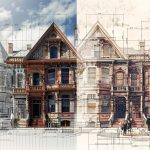Imagine designing complex sound systems, projectors, and computer networks for conference rooms, studios, or control centres. Traditionally, this meant tedious drawings and manual calculations, prone to errors and frustrating revisions. But what if there was a better way?
Enter AutoCAD AVCAD, a powerful software add-on that works seamlessly with AutoCAD. Consider it a unique toolbox for AV/IT engineers within their familiar AutoCAD environment. AVCAD helps them design and document AV/IT projects faster and more accurately.
AutoCAD AVCAD is an AutoCAD add-on for designing AV/IT systems. It automates tasks, improves accuracy, and enhances collaboration for AV/IT engineers.
Why use AutoCAD AVCAD?

Here’s what makes AVCAD so popular with AV/IT engineers:
- Saves time: AVCAD automates repetitive tasks like adding equipment symbols, planning cable layouts, and creating equipment lists. This frees up engineers to focus on the creative and strategic aspects of the project.
- Fewer mistakes: Since AVCAD uses “smart symbols” with real-world data like equipment details and cable lengths, it reduces the risk of errors that can happen with traditional drawing methods.
- Easy teamwork: In AutoCAD AVCAD, multiple engineers can work on the same project simultaneously. Sharing project data with architects and contractors is also a breeze.
- Clear communication: AVCAD allows for the creation of professional-looking schematics and reports that clearly explain the design plan. It helps avoid misunderstandings during construction and installation.
- Potentially lower costs: By saving time and reducing errors, AVCAD can lower project costs.
Also read: Important AutoCAD shortcuts for professionals
What can you do with AutoCAD AVCAD?
AVCAD offers a variety of features designed explicitly for AV/IT projects:
- Symbol library: No more drawing every microphone or projector! AVCAD has a library of symbols, saving you tons of time.
- Rack design: Design equipment racks efficiently with dedicated tools for placement and organization. You can even virtually populate racks with symbols from the library.
- Cable management: AVCAD streamlines cable management by providing tools to create cable paths, calculate cable lengths, and automatically generate cable connection reports.
- Automatic data: Equipment details like model numbers and specifications can be linked to symbols within the drawing, ensuring consistent and accurate information throughout the project.
- Reports made easy: Generate various reports with AVCAD, including equipment lists, cable schedules, and shopping lists for parts (bills of materials). These reports are valuable for procurement and construction.
Getting started with AutoCAD AVCAD
If you’re interested in learning more about AutoCAD AVCAD, here are some resources:
- AADB software website: The AVCAD developer’s official website offers detailed information, tutorials, and case studies: https://www.aadbsoftware.com/products.
- Autodesk app store: For information on pricing and compatibility, find AutoCAD AVCAD on the Autodesk App Store: https://apps.autodesk.com/ACD/en/Detail/HelpDoc?appId=1429706465754565407&appLang=en&os=Win64.
- Online tutorials: There are a growing number of online tutorials available to help you learn the basics of AutoCAD AVCAD.
Bonus tip: A basic understanding of AutoCAD can be helpful when starting with AVCAD, but it’s optional.
The future looks bright for AVCAD
The developers of AutoCAD AVCAD are constantly adding new features and improvements. Here are some potential areas of future development:
- BIM integration: Expect tighter integration between AVCAD and Building Information Modeling (BIM) software for a more holistic design approach.
- Cloud collaboration: Working on projects with people anywhere in the world might be possible with future cloud-based functionalities.
- Advanced data analysis tools: More advanced data analysis tools within AVCAD might be developed for even deeper project insights.
Conclusion
AutoCAD AVCAD is a powerful and versatile software add-on that transforms how AV/IT engineers design and document complex systems. By automating tasks, improving accuracy, and facilitating collaboration, AVCAD empowers engineers to create efficient and error-free designs. As technology continues to evolve, we can expect AutoCAD AVCAD to remain at the forefront of AV/IT design software, providing even more innovative tools for the future.
You may also like to read these articles to learn more
- Introducing AutoCAD Civil 3D
- Adobe Illustrator: Unleashing your creativity in the world of Vector Graphics
- Important AutoCAD shortcuts for professionals






